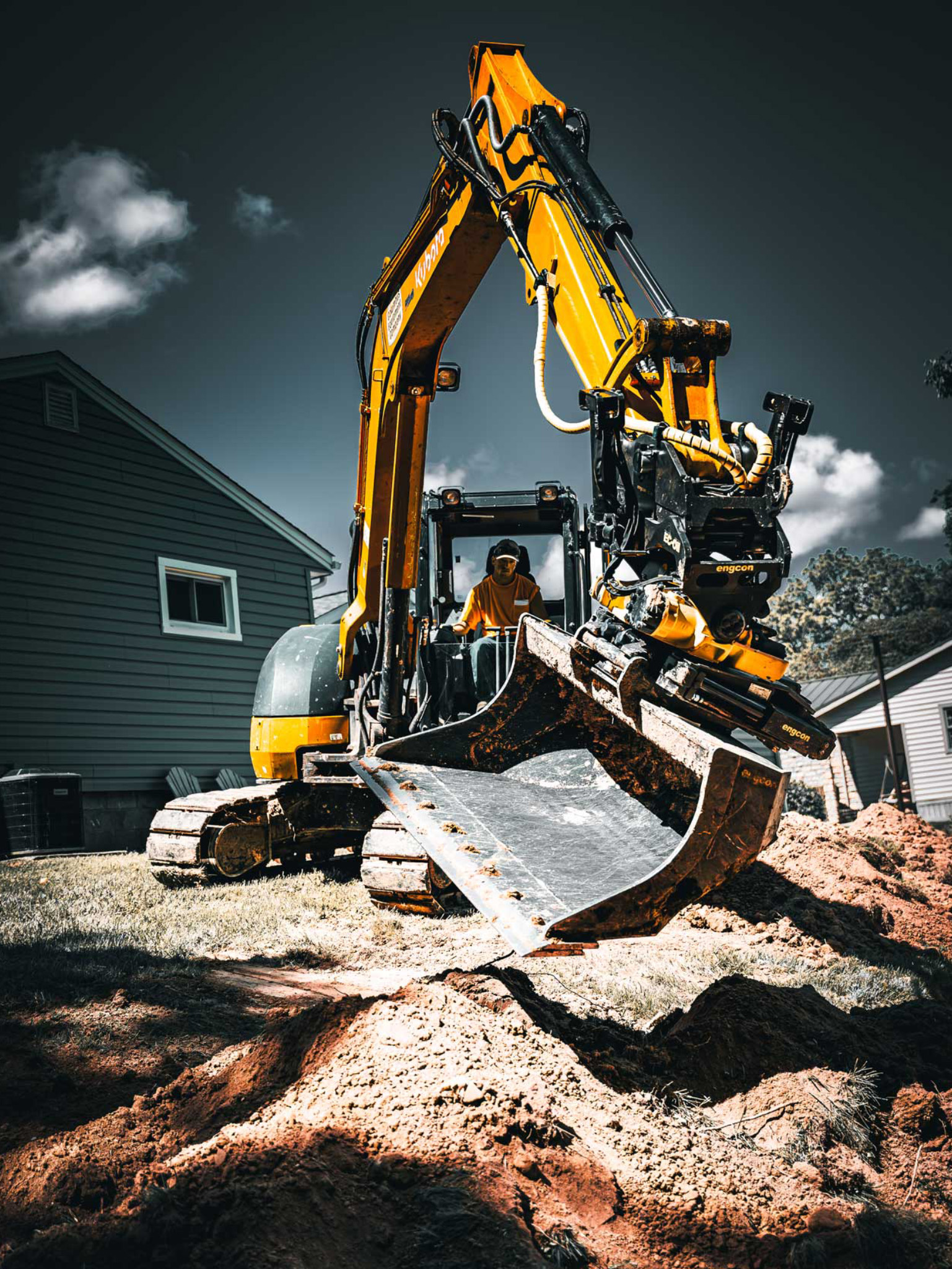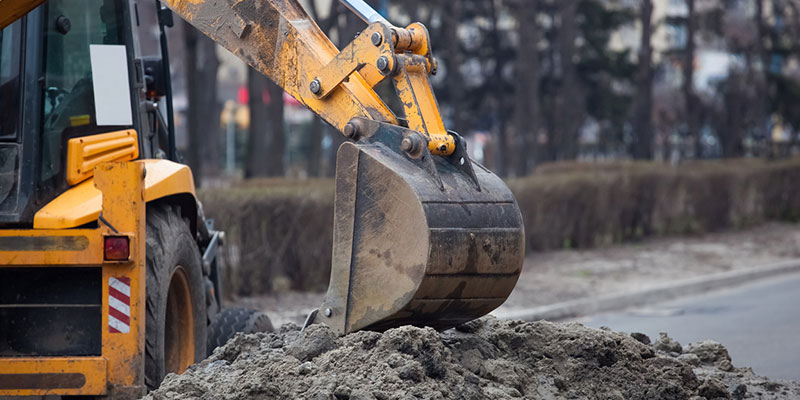Residential Excavating Ohio - Specialized Excavation for Ohio Homes
Residential Excavating Ohio - Specialized Excavation for Ohio Homes
Blog Article
Revealing the Art of Excavation: Pro Tips for Safe and Efficient Digging
As soil is transformed and earth is relocated, the complexities of excavation disclose themselves, demanding an eager understanding of equipment, dirt composition, safety and security protocols, and ecological considerations. The proficiency needed to browse these aspects effectively can indicate the difference between an effective excavation project and a prospective disaster.
Significance of Correct Equipment
To make certain the safety and effectiveness of any excavation task, using the ideal equipment is vital. The right devices not only improve performance but also alleviate threats related to excavating. Excavation tasks vary in range and complexity, ranging from little household landscaping tasks to massive construction undertakings. No matter the job dimension, having the correct equipment can make a substantial distinction in the outcome.
These versatile equipments come in numerous dimensions to fit different task needs. Miniature excavators are perfect for smaller sized tasks, while larger excavators tackle much more substantial projects successfully.
Besides excavators, other crucial tools includes dump trenchers, excavators, and trucks. Dump vehicles are vital for removing and moving excavated materials, while plates are utilized for excavating narrow and deep trenches. Bulldozers stand out in tasks that call for pushing huge quantities of dirt or debris. By buying the appropriate devices, excavation tasks can be completed securely, in a timely manner, and with precision.
Comprehending Dirt Make-up
A thorough understanding of dirt composition is essential for executing excavation projects with accuracy and safety and security. Understanding the different kinds of dirt is important as it straight affects excavation approaches, equipment selection, and general task efficiency. Soil structure commonly contains four main elements: sand, silt, clay, and raw material. Each part has unique properties that influence how dirt responds to excavation procedures.
Silt bits are smaller than sand but bigger than clay, using moderate drainage and communication. Organic issue, such as rotting plant material, influences dirt fertility and stability.
Before starting excavation, carrying out dirt examinations to establish its structure and characteristics is crucial. This details helps in picking the appropriate tools, carrying out security measures, and creating excavation techniques customized to the certain soil problems - excavating ohio. By recognizing soil composition, excavation experts can enhance task outcomes while making certain security and adherence to ideal practices
Precaution and Methods
Comprehending dirt composition is the keystone upon which security measures and procedures for excavation projects are developed, ensuring the wellness of workers and the success of the endeavor. When it pertains to safety during excavation, there are a number of key procedures that must be executed to minimize risks and avoid crashes.
First and foremost, before any type of excavating starts, a thorough assessment of the website need to be performed to identify any prospective risks such as below ground energies, unpredictable dirt problems, or neighboring structures that could position a risk. It is vital to have a competent person supervise the excavation process to guarantee that all security procedures are complied with strictly.
Moreover, all employees associated with the excavation should be effectively educated in risk-free excavating techniques and the proper procedure of devices. Personal protective equipment (PPE) such as tough hats, high visibility apparel, handwear covers, and security boots must be put on at all times to reduce the danger of injuries. lancaster trenching. Routine security conferences and tool kit talks need to additionally be conducted to keep all hop over to these guys workers informed about potential risks and reinforce safe work practices. By adhering to these precaution and protocols, excavation projects can be completed efficiently and without event.
Reliable Excavation Preparation
When getting started on an excavation job, precise preparation is vital to make certain efficiency, safety and security, and successful end results. Effective excavation preparation involves a number of key actions that are essential for the smooth implementation of the project.
When the website assessment is total, the following step is to develop a clear timeline and timetable for the excavation tasks. This includes identifying the sequence of jobs, devices requirements, and workforce appropriation. Proper scheduling aids stay clear of delays and guarantees that the job remains on track.

Additionally, communication among all employee is vital during the preparation stage. Clear instructions, routine updates, and effective coordination are vital for an effective excavation job. By spending time and initiative in careful preparation, excavation groups can substantially boost performance, minimize risks, and accomplish successful results.

Managing Ecological Factors To Consider
With enhancing emphasis on ecological view it sustainability in building practices, taking care of environmental considerations has actually come to be a crucial element of excavation projects. Excavation tasks have the prospective to impact the surrounding atmosphere with soil disintegration, debris runoff, environment interruption, and contamination of water resources. To alleviate these risks, it is important to carry out best practices that focus on environmental protection.

Furthermore, proper waste management is important to stop dirt and water contamination. Applying treatments for the disposal of unsafe products, recycling of waste products, and minimizing using harmful chemicals can considerably decrease the environmental impact of excavation tasks. By incorporating these techniques right into excavation preparation and implementation, building and construction firms can make sure that their jobs are not only safe and productive but also environmentally responsible.
Verdict
Finally, understanding the art of excavation click here now needs a complete understanding of appropriate devices, soil composition, precaution, and reliable preparation. By complying with these standards and thinking about environmental elements, excavations can be conducted securely and effectively. It is important to focus on security and productivity in every digging task to guarantee successful end results.
As soil is transformed and planet is moved, the intricacies of excavation reveal themselves, requiring a keen understanding of tools, dirt composition, safety methods, and ecological considerations.To ensure the safety and security and performance of any type of excavation task, making use of the proper devices is paramount.An extensive grasp of dirt structure is fundamental for carrying out excavation tasks with accuracy and security. Recognizing the different kinds of dirt is crucial as it straight impacts excavation approaches, equipment choice, and overall job performance. By recognizing dirt composition, excavation professionals can improve job end results while making sure safety and security and adherence to best methods.
Report this page